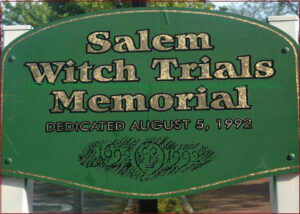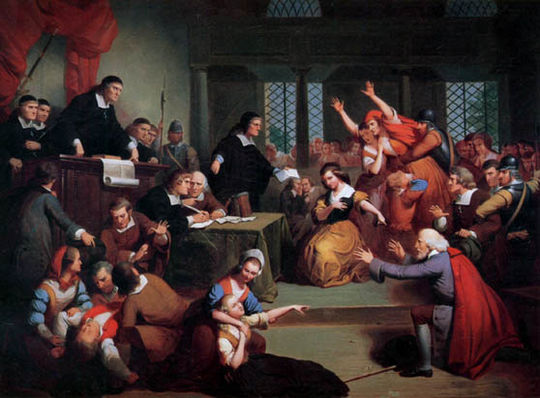If, like me, you’re feeling a wee bit “witchy” during these COVID-19 days, here’s a piece of witchcraft history to ponder on.
For instance, did you know that it was on September 22nd in 1692, 328 years ago, that the last eight witches in Salem were hung for their so-called crimes?
The history of witchcraft began back in 1692 in Salem Village, a puritan settlement in Massachusetts. Those last eight witches who were hung were Mary Easty, Martha Corey, Ann Pudeator, Alice Parker, Mary Parker, Wilmott Redd, Margaret Scott and Samuel Wardwell. The men among the accused were more commonly referred to as Wizards. John Proctor was the first male to be named a ‘wizard’ or witch, and Bridget Bishop was the first witch to be hanged in Salem on June 10 that year.
In fact, between June 10 and September 22 of that memorable summer of 1692, nineteen men and women were convicted of witchcraft and taken to Gallows Hill near Salem Village to be hung. Over 150 others remained in jail until the following summer.
So what were their crimes? Most had in some way disregarded the very puritanical existence upon which their society was based. The women might, for instance, have worn unsuitable clothing such as a black cap and a red paragon bodice, intertwined with other vibrant colors. They might have played the game of shovel board in a tavern or been accused of casting spells on young girls by practicing their craft. These so-called “afflicted girls” would act strangely as though having fits with distortion of their bodies. They were probably suffering from epilepsy, but the Puritans believed otherwise. Their behavior, they declared, was obviously as a result of a spell cast upon them by a witch.
You would also be accused of being a witch if you happened to be reclusive or you talked to yourself. In fact any eccentric behavior would have labelled you as being not part of the norm – and therefore obviously a witch. Those accused also often did not go to church, or went to some other church other than the accepted puritanical Salem Village Church. If you were able to speak French or had aided in any of the recent native wars, you would also be accused of practicing witchcraft. And the worst possible thing you could do would be to support a witch who had already been accused, even if he or she happened to be your own spouse.
Following the last hangings on September 22 things finally began to settle down in Salem, and by 1711 some of the families of those accused were even compensated for the wrongful deaths of their family members. By 1752, Salem Village had been renamed Danvers, and in 1957 the State of Massachusetts officially apologized for the wrongdoings in the year 1692.
 In 1992, on the 300th Anniversary of those trials and subsequent hangings, a witchcraft memorial was designed by James Cutler and dedicated in Salem, an indication of how education had finally obliterated the fear of the unknown and of those who did not fit into an acceptable pattern of life.
In 1992, on the 300th Anniversary of those trials and subsequent hangings, a witchcraft memorial was designed by James Cutler and dedicated in Salem, an indication of how education had finally obliterated the fear of the unknown and of those who did not fit into an acceptable pattern of life.
The so-called Witches in Salem in the 1690s, who were persecuted for trivial things which were simply not fully understood by the masses, have little or no similarities to those who practice Wicca today. The date, September 22nd 1692, however, will certainly be remembered as being the one when the witch-hunt in Salem finally ended.
There has been an increased interest in magic and the practice of witchcraft in recent years due in part to the phenomenal success of J.K. Rowling’s Harry Potter books. Children, it seems, are fascinated by the world Rowling created and enjoy being transported to a place of make believe.
What a difference 328 years makes!



